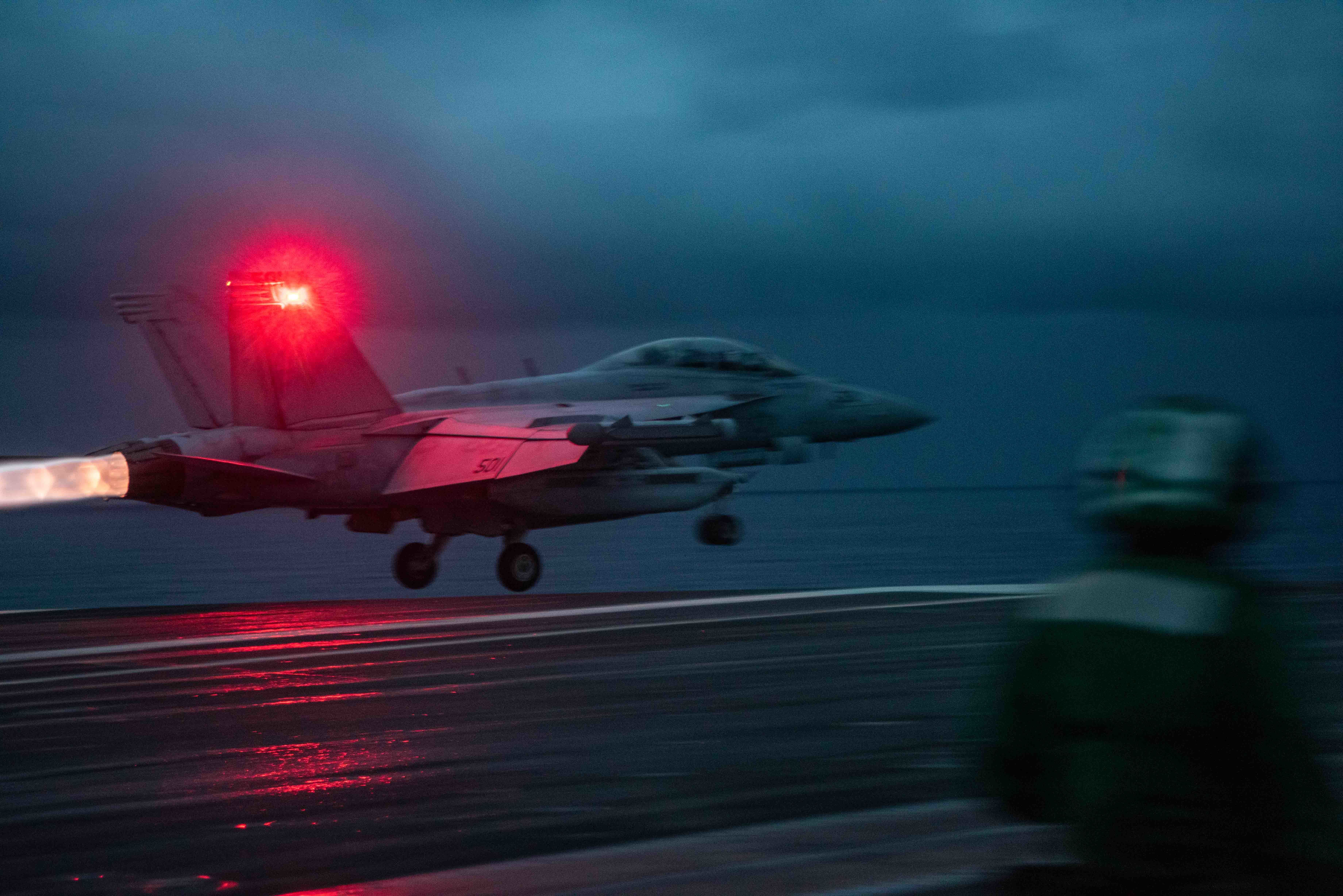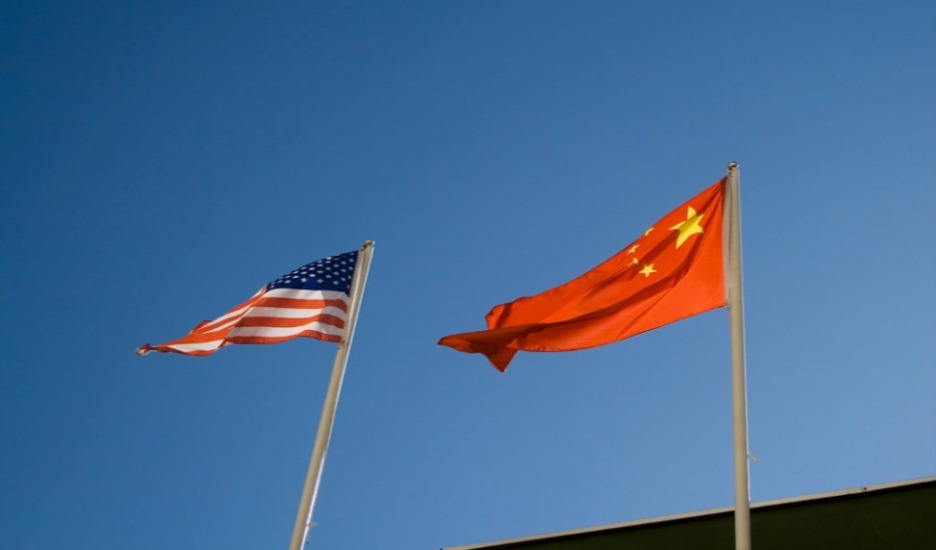Water Wars: No One in the Mood for Compromise in the South China Sea
ASEAN member states met in June as tensions in the South China Sea continue to rise.

Published by The Lawfare Institute
in Cooperation With

Continued Militarization of the South China Sea
Both the U.S. and China continue to escalate the intensity of their now-routine maritime operations in the South China Sea. According to the Beijing-based South China Sea Strategic Situation Probing Initiative, the U.S. conducted 72 reconnaissance flights in May, compared to 65 in April. This is paired with a continuation of U.S. Freedom of Navigation Operations (FONOPs) in the region. On June 14, the Ronald Reagan Carrier Strike Group—consisting of guided-missile cruiser Shiloh, guided-missile destroyer Halsey and Carrier Air Wing 5—sailed through the Bashi Channel, which separates Taiwan and the Philippines. The following week, the USS Curtis Wilbur, an Arleigh Burke guided-missile destroyer, conducted a “routine Taiwan Strait transit.” The U.S. Navy maintains these FONOPs are lawful under the United Nations Convention on the Law of the Sea. The FONOPs continue to attract the ire of the Chinese government with the People's Liberation Army's Eastern Theatre Command retorting that “the United States is the greatest creator of risks for regional security.”
Beijing has also continued to ramp up its military presence in the region. On May 31, the Royal Malaysian Air Force claimed that 16 Chinese warplanes entered Malaysia’s airspace “aimed at showing dominance,” which would be a significant increase in Chinese incursions into Malaysia. However, some defense analysts question the accuracy of this number because deploying over a dozen warplanes to Malaysia presents a significant logistical challenge for China.. Regardless, the U.S. Air Force’s Pacific commander denounced the incursion as “escalatory” and “destabilizing.”
Meanwhile, on June 5, the Japanese Coast Guard claimed that Chinese ships sailed for a record 112 days in a row near the Senkaku Islands (Mandarin: Diàoyú Dǎo), a highly disputed territory claimed by both Japan and China. And on June 15, the PLA conducted what is, to date, its largest aerial exercise above Taiwan, with 28 warplanes flying over the Taiwanese terrority. The planes entered Taiwan’s southwestern Air Defense Identification Zone (ADIZ), with some continuing through the Bashi Channel, located off the island’s eastern shores. The exercise included 14 J-16 fighter jets, 6 J-11 fighter jets, four H-6 bombers, two KJ-500 early warning aircraft, a Y-8 electronic warfare aircraft and a Y-8 anti-submarine warfare aircraft.
Analysts such as Wei Dongxu, a Beijing-based military expert, argue that recent increases in the intensity of U.S. and Chinese actions are the result of a feedback-loop. As China asserts jurisdictional claims to territory within its so-called nine-dash line, the United States increases the frequency of its FONOPs. And as the U.S. strengthens ties with Taiwan, China escalates the intensity of its retaliation. Dongxu believes this cycle of escalation may have recently played out during the Ronald Reagan Strike Group’s FONOP through the Bashi Channel on June 14, to which China responded the following day by deploying a record number of warplanes around Taiwan. Less than a day after the aerial exercise, Chinese Defense Minister General Wei Fenghe issued a statement saying, “on issues related to Taiwan, Xinjiang, Hong Kong, and the South China Sea, China is determined to safeguard the country’s core interests.” This statement responds too growing pressure on China regarding its usage of forced labor in Xinjiang and international condemnation of its crackdown on press freedoms in Hong Kong.
The increase of military presence in the South China Sea appears unlikely to subside, as other nations continue to develop their maritime capabilities within the region. In response to China’s continued efforts to dominate the South China Sea, Indonesian military sources say their country is planning to increase its submarine fleet from four to 12 vessels, and Vietnam is expanding its maritime militia.
The United States also plans to expand its naval footprint in the region. The United States Pacific Air Forces (PACAF) is considering expanding its so-called Agile Combat Employment (ACE) capabilities in the region, according to PACAF commander General Kenneth Wilsbach. The strategy behind ACE moves Air Force personnel away from main operating bases and disperses them within the Pacific region. Wilsbach believes this will improve crisis response times and reduce adversaries’ targeting capabilities.
The Pentagon is also considering establishing a permanent naval task force in the Pacific to counter China’s growing aggression, according to sources interviewed by Politico. Although not yet finalized, Politico notes that the initiative “would add muscle to President Joe Biden’s tough talk on China and send a signal that the new U.S. administration is serious about cracking down on Beijing’s military buildup and aggressive behavior in the Pacific region.” According to Elbridge Colby, a former Trump Pentagon official, the initiative would signal the Pentagon’s continued shift away from the Middle East and towards the Pacific.
The task force would be modeled on NATO’s Standing Naval Forces Atlantic, an immediate naval reaction squadron established during the Cold War. The European task force primarily participated in scheduled exercises but could rapidly respond to crises. This flexibility allowed the task force to “maximize their influence at sea and to specialize their investments simultaneously,” according to Jerry Hendrix, an analyst for consulting firm Telemus Group. Hendrix also noted that the proposed initiative should include regional allies, such as Japan and Australia, as well as European allies, particularly Britain and France, both of which are increasing their naval presence in the Pacific. An international task force would be an effective “deterrent because it demonstrates a unity of effort in countering Chinese excessive threats to the concept of a free sea and free trade with their large territorial sea claims.”
Although the makeup of the would-be task force is unknown, NATO leaders are increasingly aligning themselves with Washington’s confrontational stance with Beijing. During President Biden’s eight-day visit to Europe in mid-June, the President urged allies to speak with a single voice about China. On June 14, NATO leaders released a statement claiming that China’s “assertive behavior present[s] systematic challenges to the rules-based international order and to areas relevant to alliance security.”
Calls for De-Escalation at ASEAN summit
Countries within the Pacific region are using international platforms to call for a de-escalation of tensions. On June 7, the foreign ministers of the 10-member Association of the Southeast Asian Nations (ASEAN) met with their Chinese counterparts in Chongqing to discuss tensions in the South China Sea. The parties—which include Brunei, Cambodia, Indonesia, Laos, Malaysia, Myanmar, the Philippines, Singapore, Thailand, and Vietnam—subsequently issued a joint statement saying the two sides had agreed to “enhance and promote maritime security” and “exercise self-restraint in the conduct of activities that would complicate or escalate disputes and affect peace and stability, and pursue the peaceful resolution of disputes.”
The following week, on June 15, ASEAN defense officials met with their counterparts from eight other countries—including Australia, China, India, Japan, New Zealand, South Korea, Russia, and the United States—at the annual ASEAN Defense Ministers’ Meeting (ADMM) Plus forum. At the forum, Japanese Defense Minister Nobuo Kishi “urged all parties to make efforts to resolve maritime disputes peacefully and abide by international law.” Malaysian Defense Minister Ismail Sabri equally urged parties within the South China Sea “to be more moderate in their behavior.”
In a separate bi-lateral agreement, PLA Navy chief Vice-Admiral Shen Jinlong and commander of the Vietnam People’s Navy Rear Admiral Tran Thanh Nghiem agreed to establish a hotline to manage the risk of conflict over their competing claims for territory within the South China Sea.
Regardless of attempts for de-escalation through hotlines and diplomatic statements, tensions within the South China Sea are unlikely to be eliminated within the foreseeable future. Dewi Fortuna Anwar, an analyst at the Indonesian Institute of Sciences (LIPI), told BenarNews “I don’t think this issue will really be resolved, because the situation has become a zero-sum game, and I don’t think anyone is in the mood for a compromise.”


.jpg?sfvrsn=5a43131e_9)


